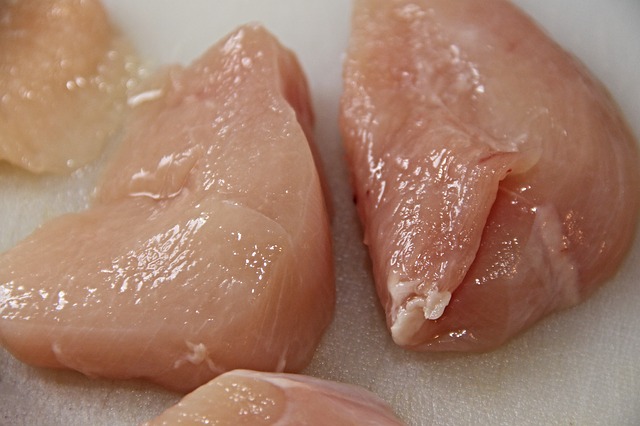Chicken meat is one of the most sensitive food commodities out there, and so whichever stage you are in its preparation and preservation, you just have to be on the qui vive for harmful bacterial pathogens that can easily accumulate on the inside, breed, and eventually cause you food poisoning!
No, no, no dummy! you can’t see the pathogens, you only need to follow some set out rules and regulations in order to wrestle them down to the ground.
Thawing chicken meat is one of those sensitive stages of chicken preservation, and this article is all about it.
How long can thawed chicken stay in the fridge?
According to a publication from the United States Department of Agriculture (USDA), raw, cooked and previously frozen chicken (raw and cooked) is safe to keep in the refrigerator for no more than three days after it has been thawed in there.
Notice there’s a big catch from the paragraph above, and that’s the line that states “after it has been thawed in there” — meaning the refrigerator.
The USDA strongly condemns the refrigeration of chicken meat (whatever form or cuts you’re dealing with) if it has been thawed using any other method outside of refrigeration. You’ll soon learn why this is so.
Why less than a week in the fridge, and why must the chicken be thawed in the refrigerator?
Chicken, just like any other perishable meat, has two families of bacteria that actively colonize it, according to the publication from USDA. These are the spoilage and pathogenic bacteria.
The former are the culprit that cause food to deteriorate and develop off taste, flavor, texture, and also take on a greenish/grayish tinge we all hate to see when we take off the lids from storage containers, but they most often do not cause any harm or complication when ingested into the body, although there are still exceptions like the Listeria monocytogens that can go into full mode war with your guts when ingested.
The latter, pathogenic bacteria, on the other hand, are those that go undercover, meaning that they colonize food items without actually showing any visible signs of their presence, but these are more than capable of causing food borne illness when ingested into the body.
Pathogenic bacteria usually multiply the fastest within the temperature range of 40 and 140 F, also known as the “Dangers Zone”. As for the spoilage bacteria, they are very tolerant of lower temperatures and can therefore breed and multiply at temperatures below 40 F — refrigeration.
In case you’re wondering, cold environments like the freezer and refrigerator compartments typically inhibit (not completely eliminate) the growth of bacteria in food items. To eliminate their presence means to take all the necessary safety precautions prior to freezing. The USDA has outlined these in details in their publication.
The ability of spoilage bacteria to survive and breed under 40 F is the very reason why you shouldn’t keep chicken parts in the refrigerator (whether cooked, raw or previously frozen) for longer than four days.
Here’s the exact details that the USDA actually specified on their publications titled “Chicken from Farm to Table” and “Refrigeration and Food Safety”.
- Less than 2 days for raw and previously frozen chicken that has been thawed in the refrigerator.
- Less than 4 days for cooked chicken, left overs, or ready prepared chicken that have been thawed in the refrigerator.
Keeping chicken parts for durations longer than these eventually invites spoilage bacteria to breed, since for some inexplicable reason, they are still tolerant of cold temperatures like the one found in the refrigerator.
Their presence, and therefore multiplication will then cause the chicken to deteriorate after this time frame, and sometimes even before it when proper safety precaution with regards to handling chicken parts wasn’t fully observed.
The USDA however states, that most people will likely remain healthy even after consuming a chicken that shows signs of spoilage because the chances of getting sick from spoilage bacteria is very low. Still, their recommendation is for you to discard the chicken part and get going with your day. Little still means something for compromised people.
Now for the other part of the puzzle, on why the USDA recommends thawing in the refrigerator as opposed to other places like the microwave or countertop, it’s because of the other type of bacteria, the pathogenic one.
These are mostly associated with the other methods of thawing than they are with refrigeration. And that’s because they breed the fastest at temperatures between 40 to 140 F. Usually in less than two hours.
Thawing a chicken part in the microwave will cause it to develop hotspots for pathogenic growth, because some parts will heat up faster than the other, eventually crossing the 40 F limit. Similarly, thawing in a cold water bath is highly unreliable as it can also cause the meat to warm up far more than the recommended temperature for it, less than 40 F.
So the safest thawing approach that will greatly reduce the chances of getting food borne illness is that which consistently holds the chicken (during thawing) below the operation zones of these pathogens. And none does this better than refrigeration.
How to store thawed chicken:
Keep chicken in its original packaging, at the lowest shelf (because it’s the coldest and also because that’s the safest place to reduce cross-contamination from juicy drips) for the appropriate duration. Make sure to keep the refrigerator below 40 F at all times. If you have a malfunctioning fridge, it’s best to just cook and consume the chicken right away.
Can you thaw and then refreeze chicken?
It’s absolutely possible that you thawed the chicken part only to realize that you aren’t going to be using it anymore, or even for some solid stretch of days. In this case, can you put back the thawed chicken in the freezer since refrigerator isn’t really an option?
The answer is yes you can. But keep in mind that you’ll lose so much in texture and taste because of the loss in moisture (the chicken’s natural juice) which comes with every thawing session.
This is so much worse with cooked chicken than a raw one. And it’s understandable because you’ve already lost so much in moisture from first thawing it, then cooking. What’s even worse, is an overcooked chicken losing more moisture. Feed that to the dogs!
At the end of the day, it seems thawing and refreezing raw, cooked, or previously frozen chicken doesn’t seem like an idea that i’ll ever recommend to anyone.
If you still find it necessary to do so due to unavoidable circumstance, here is how to go about it.
- Raw chicken must be refrozen within 2 days of thawing whereas cooked chicken must be refrozen within 4 days.
- Freeze raw chicken for no more than 9 months for optimal quality whereas freeze cooked chicken for no more than 4 months.
- Use heavy air tight sealing for any storage greater than 2 months. This means you should wrap over the original chicken packaging with heavy-duty foil, plastic wrap, or freezer paper. This will prevent freezer burn which cause frozen chicken to become dry and tasteless.
How to tell if a chicken has gone bad?
Depending on many incontrollable factors, your chicken may or may not live up to the stated threshold time. There are many signs you can use to check whether the chicken has gone bad in the refrigerator. Here are they.
- The chicken will exude a foul smell.
- The chicken adopts a greenish or grayish tinge on the surface.
- There is visible mold growth on the chicken.
- The texture of the chicken is slimy.
Whilst the USDA says that it might still be safe (for many people) to consume a chicken in this very state, I think a vast majority of us would rather pass the offer to the bin. It just smells and looks disgusting.


